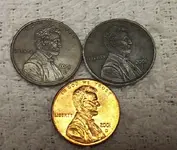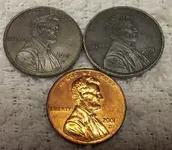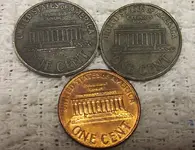T
trish76642
Guest
- #1
Thread Owner
I've posted before about the 2 black pennies that i have, thought they might of been steel pennies from the 40's but i finally found them and they are 2001's (D), they are slightly larger than a regular penny, and dark grey in color,if you turn them over the edge is raised higher on the back side, and they both have a slight 'bow' to them, as you can see, the detail on them is more intense than a regular penny, definately not a copper penny! But the fact that they are larger brings another question,also they are not as heavy as a 'regular' penny, what could they be made of and why?... Here are a few pictures.
thanks for taking the time!
Trish
thanks for taking the time!
Trish











